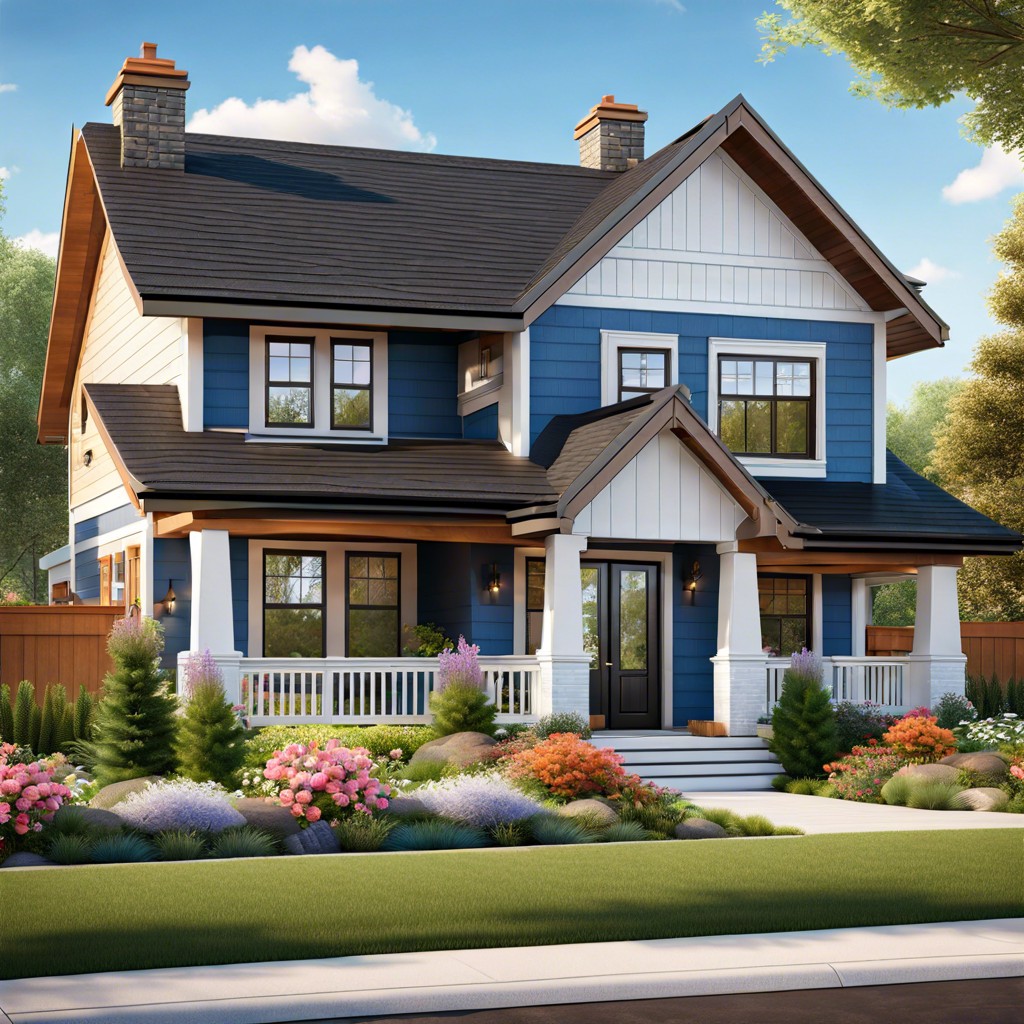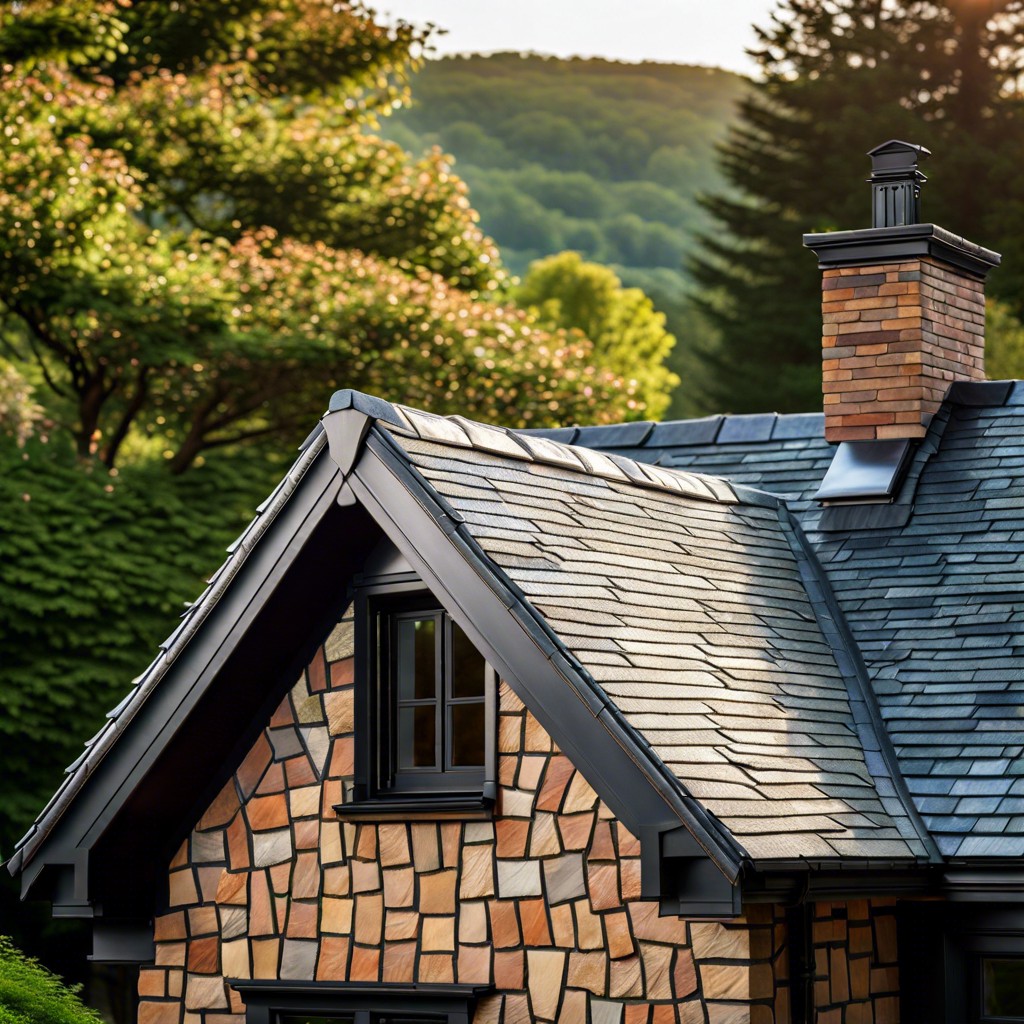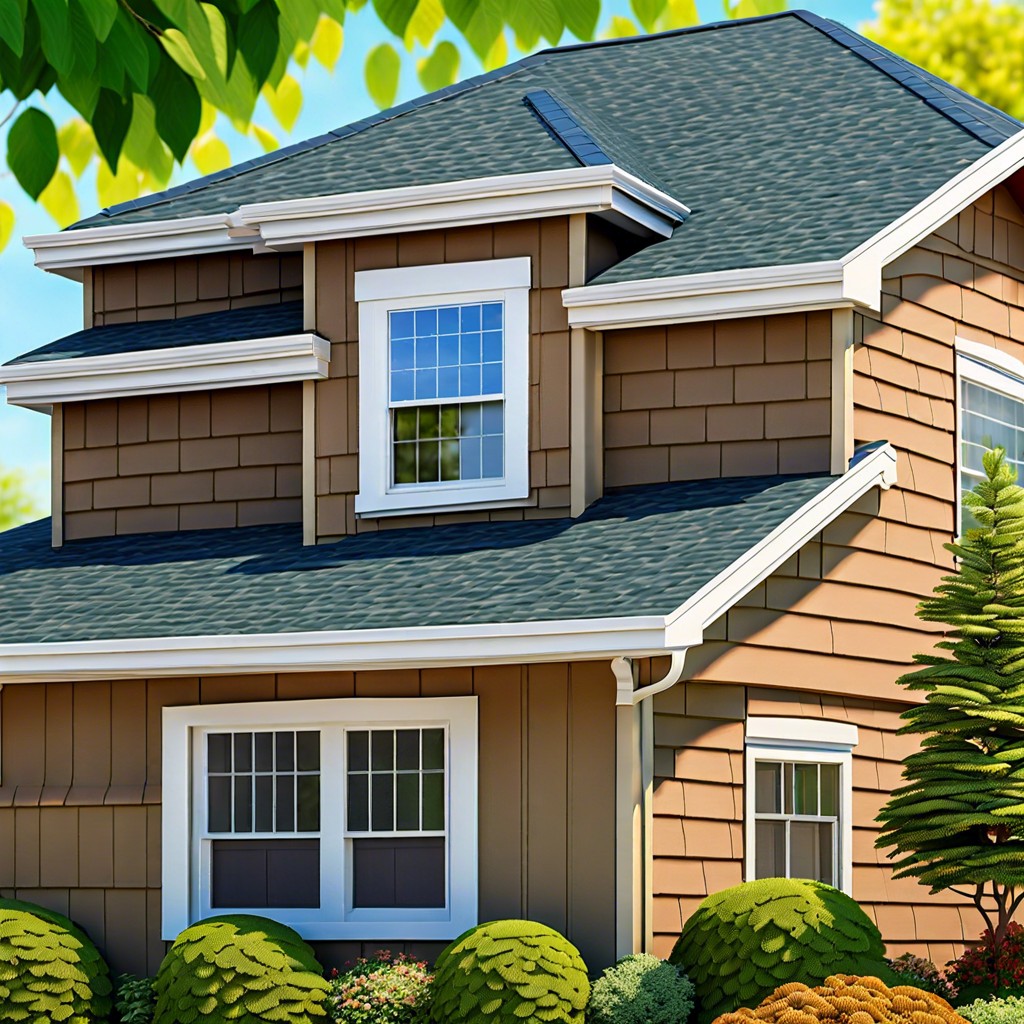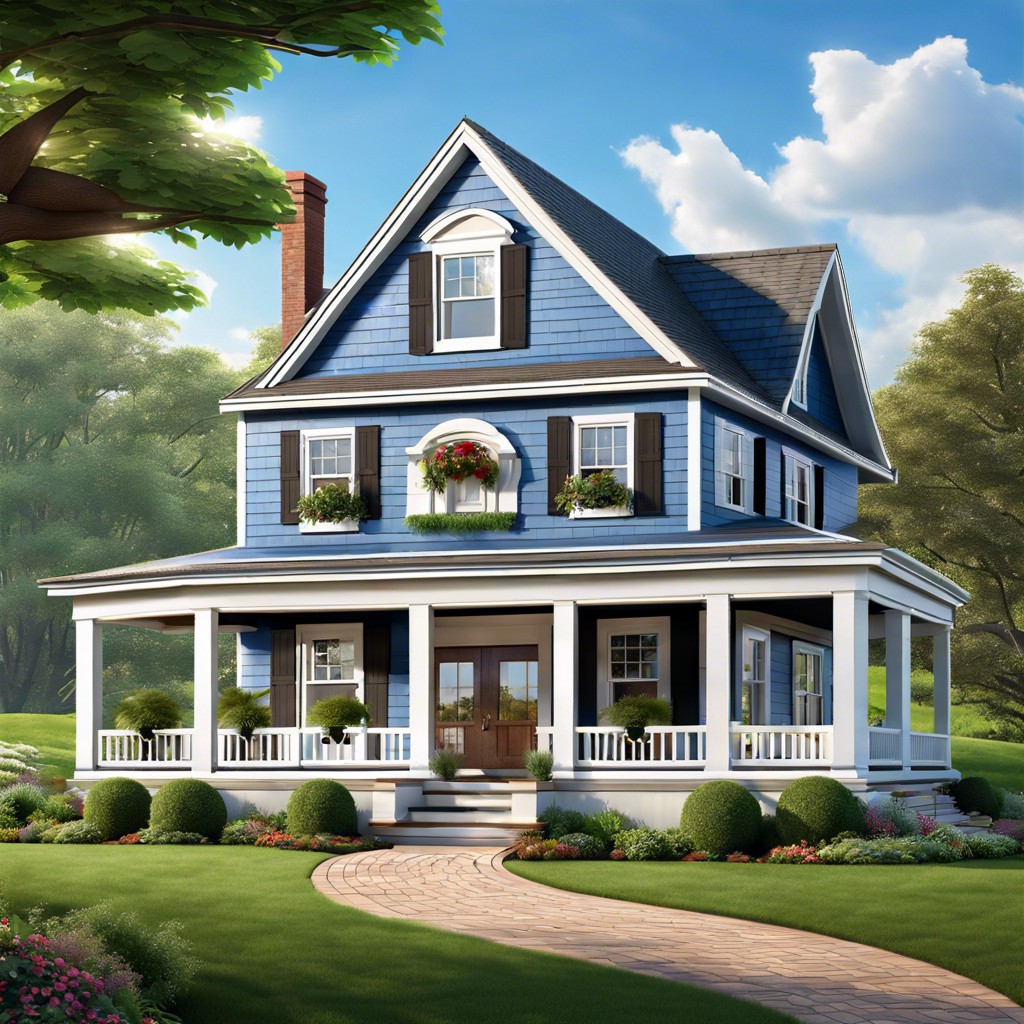Last updated on
Discover what a pitched roof is and how its angles play superhero for your home’s drainage and aesthetics.
In the mysterious world of architecture, where roofs have personalities more elaborate than your Aunt Ethel’s holiday fruitcake, pitched roofs stand tall—both literally and figuratively. Why choose a hat for your house that tilts its brim? We’ll explore how these angular allies defy gravity, flirt with aesthetics, and throw shade—literally—while dominating the skyline with panache. Journey with us as we decode the cryptic charm of gables, hips, gambrels, and mansards, offering you the lowdown on why your next roof should proudly stand at an angle. Prepare yourself for some tips as sharp as the peaks themselves.
Key takeaways:
- Effective water runoff management.
- Greater durability against harsh weather.
- Increased attic and living space.
- Enhanced aesthetic appeal.
- Improved energy efficiency through ventilation.
Description of Pitched Roof
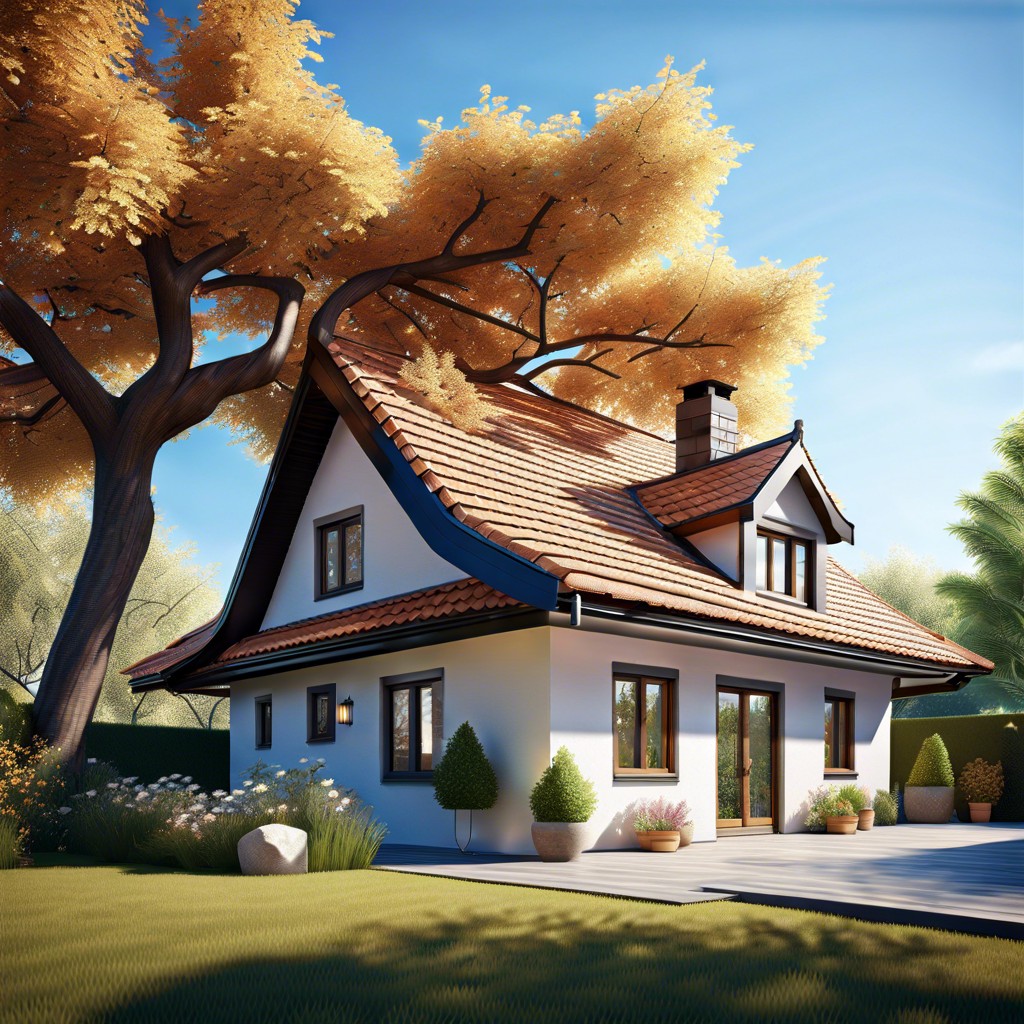
Imagine a piece of pie, but without the delicious filling. A pitched roof functions much the same way, featuring two sloping sides that meet at a peak, much like a pointy triangle on top of a house.
They are architectural superheroes, fighting off rainwater with a swift slope, reducing snow accumulation faster than a hot knife through butter, all while adding a touch of style to the neighborhood.
Pitched roofs provide:
Sloped surface for water runoff
Greater durability against weather elements
Enhanced attic space for storage or extra rooms
Potential for lovely loft conversions
Benefits of Pitched Roof
Pitched roofs are like the supermodels of the roofing world—tall, sleek, and always admired from a distance. They efficiently channel rainwater and snow, taking gravity’s help like an A-grade student borrowing someone’s notes. It’s a drainer’s delight under a pitched roof!
More attic space, you ask? These roofs got your back. Or rather, your overstuffed attic’s back. Perfect for a secret lair, or just more room for your collection of antique cheese graters. Don’t ask.
Their durability is commendable. The angle of inclination means less chance of water pooling, reducing wear and tear, and keeping you from starring in a scene from “Drip, Drip, Revolution.”
Not just a sturdy friend, a pitched roof is aesthetically pleasing. It elevates curb appeal and keeps your house looking less like a shoebox and more like a palace, or at least a castle for squirrels.
Finally, the energy efficiency aspect—ventilation is easier, meaning cooler summers and warmer winters. It’s like your roof just knows how to keep things chill. Or toasty. Impressive, no?
Types of Pitched Roofs
First, we have the gable roof, the darling of the suburbs. It’s the quintessential triangle enthusiasts’ dream, with two sloping sides meeting at a peak. This classic design is everywhere, mainly because it sheds water like a waterproofed duck.
Next, the hip roof. A little fancier, this one has slopes on all four sides. No vertical edges here, just an elegant, pyramid-like charm. It’s great for high-wind areas, perfect for when your roof dreams of being aerodynamic.
Then there’s the gambrel roof. It’s the mullet of roofs: business on the top, party on the bottom. With two different slopes on each side, gambrels are a barn favorite and great for creating extra attic space. Or as I like to call it, the room for all the stuff you promise you’ll sell at the next garage sale, but never do.
Finally, we encounter the mansard roof, the French aristocrat of the group. With four slopes, two on each side, it’s here to say, “roomy attic, anyone?” Perfect for adding another floor, it achieves both style and function. Remember, your house deserves a little je ne sais quoi.
Gable Roof
These roofs are the architectural equivalent of a triangle drawn by a five-year-old—simple, effective, and slightly charming.
Visualize two sloping planes that meet at the top forming a ridge and you’ve captured its essence.
Benefits include simplicity in design, which means cost-effective construction. They wear the crown in shedding water and snow. Just let gravity do its job.
They also offer more attic space. A haven for your forgotten holiday decorations.
Watch out for strong winds. Like a celebrity’s favorite hat, they can sometimes blow away if not constructed properly.
Overall, an approachable classic. A bit like the vanilla ice cream of the roof world.
Hip Roof
This wonder of rooftopian architecture is akin to the building equivalent of a trusty all-terrain vehicle. Its slopes extend on all four sides and converge at the top, resembling a well-cradled hat for your home.
With this style, you get a natural shield against fierce winds. The slope-on-every-side shindig keeps the structure as sturdy as a bodybuilder’s handshake.
Also, while snow is lovely to look at (if you’re into freezing your toes off), it’s not so great for your roof. Hip roofs excel at bouncing the wintry white stuff right off, playing a continual game of “Oh no, you can’t sit here!”
This construction also offers extra living space in the attic. Valuable for those who adore stashing away nostalgia, haunted dolls, or grandma’s waffle iron collection.
Its aesthetics are as versatile as your favorite multi-tool. Render it with shingles, tiles, or even that glossy metal look. It’ll charm the birds and the squirrels that wander by.
Gambrel Roof
Ah, the Gambrel roof—a design that screams, “I wanted a barn, but only had space for a house!” With its iconic dual-sloped sides, it’s the kind of roof that earns double takes and plenty of head nods. Now let’s explore why this roof wins the popularity contest among farmers and stylish homeowners alike.
First and foremost, the Gambrel offers an attic on steroids. Those double slopes create extra headroom, providing a spacious area just waiting to be transformed into a cozy loft, an art studio, or perhaps a secret lair for those planning world domination.
It’s also wallet-friendly. Thanks to its simple truss design, construction costs are often lower, making your bank account breathe a sigh of relief.
Weather-wise, the steep upper slope helps shed rain and snow. But like a moody cat, it’s best suited for moderate climates; too much snowfall, and it might find itself needing extra care.
Aesthetically, the Gambrel doesn’t skimp on style points. Its distinctive silhouette adds character, lending a touch of classic charm to modern homes or imbuing historic buildings with architectural pizzazz.
So, when considering a roof with personality, plenty of room, and just a hint of rebellion, the Gambrel might just be the unlikely hero of your story.
Mansard Roof
Fancy a French connection on your roof? Enter the Mansard roof, a Parisian marvel! With its dual slopes on each side, the lower slope steeper than a French waiter’s charm, it not only looks stately but offers practical perks too.
First, you get bonus attic space—perfect for storing those questionable style choices from the ’80s or creating an extra room for your cat’s yoga studio.
Second, it’s stylishly versatile. Whether you’re channeling a chateau or gearing up for a gothic revival, this roof has you covered, quite literally.
Lastly, while it might need a keen architect’s touch to execute just right, the visual statement it makes keeps the Joneses genuinely envious. Who knew a roof could give you bragging rights?
Comparison of Roof Types
Gable roofs get straight A’s in simplicity, resembling two slopes meeting at the top, kind of like a pizza slice. They’re great for shedding water and offering extra attic space. But hold onto your hats; they can be quite the wind-sail in stormy weather.
Hip roofs, the cool cousin with a slope on every side, offer stability. Stubborn wind? No problem. However, they can be a bit more complicated to build, and let’s face it—a tad more costly.
Gambrel roofs, the barn’s best friend, are masters of maximizing space. Perfect for anyone dreaming of a cozy attic apartment. But beware, these drama queens can be high-maintenance in heavy snowfall.
Last but not least, the Mansard roof—it’s the multi-tasker, offering an entire extra floor, with a hint of European flair. It’s quite the showstopper, though potentially a budget buster in construction and upkeep.
Each roof dances to its own tune, offering unique benefits and quirks. Choose wisely, grasshopper.
Considerations for Selection
When deciding on your roof’s steep angle adventure, consider a few essential factors to ensure your choice doesn’t become the next episode of “Rooftop Regrets.”
Firstly, climate plays a significant role. Living in a rainy area? A steeper pitch might save your house from becoming a ship on a sea of puddles. In snowy regions, a steep angle ensures winter wonderlands slide right off.
Next, architectural style is crucial for avoiding a fashion disaster. A dreamy Victorian abode may demand the elegance of a mansard roof, while a minimalist modern pad might rock a hip roof with understated flair.
Don’t forget about the budget. Some designs, while aesthetically desirable, might also have your wallet crying for mercy. Simpler styles like gable or hip can be easier on the pockets.
Lastly, embrace your inner rebellious spirit—check local building codes. They may limit your creative roof escapades, unless you plan on exchanging fashion advice with building inspectors.
Choose wisely, and your roof will not only top off your home but also your list of savvy decisions!
Maintenance Tips
Consider regular inspections; it’s like taking your roof to a spa day. Look for signs of wear, tear, or the odd rebellious shingle trying to escape.
Keep gutters clear. They’re not intended as planters for wild greenery. Avoid water pooling and giving your roof an unwanted bath.
Trim your trees. They may be friendly, but they shouldn’t be so close they’re practically roommates with your roof.
Remove debris promptly. Leaves and branches are best admired from a distance, not residing on your roof’s surface.
Lastly, ensure there’s proper ventilation. Your roof needs to breathe. Nobody wants a moldy or overly damp surprise.
Following these tips keeps your pitched roof as sharp as a witty pun, but infinitely more durable.

